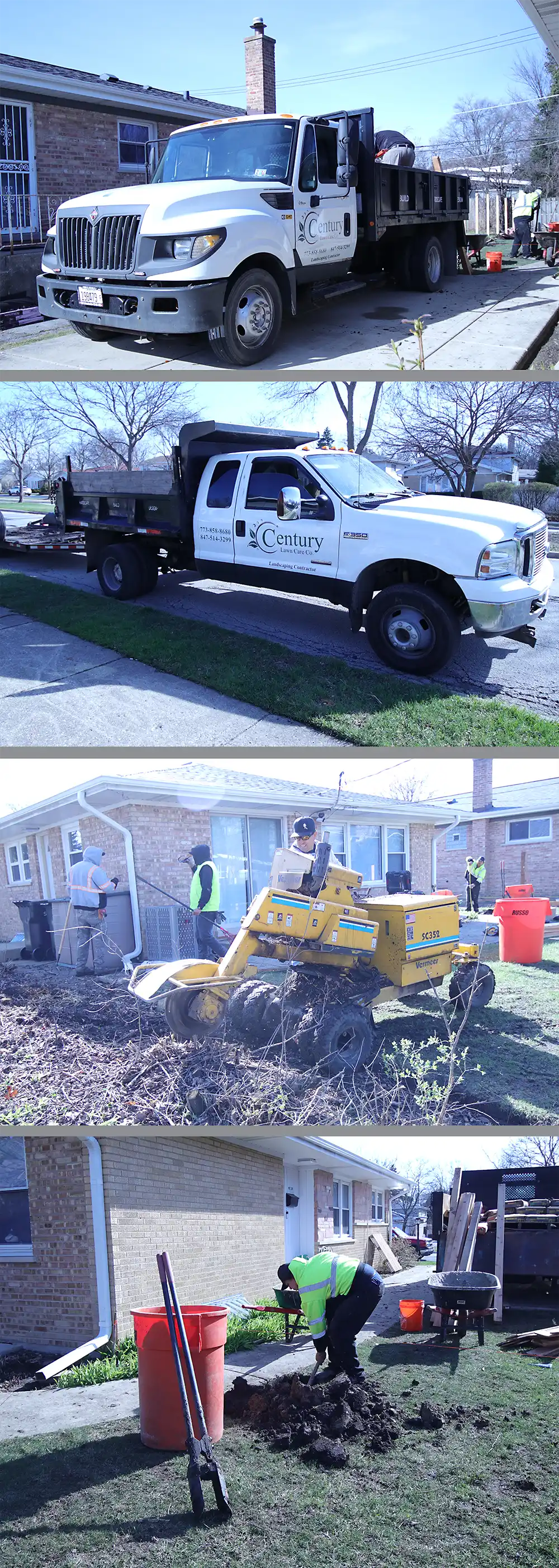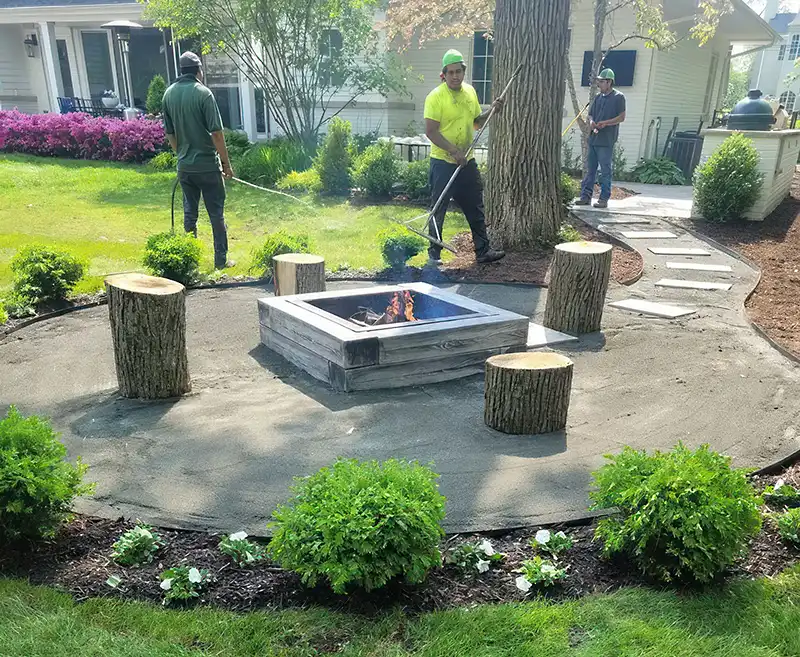F.A.Q.
When selling your home, the landscaping is often one of the first details prospective buyers notice — and attractive and well-maintained lawns and plantlife adds curb appeal and a welcoming aesthetic. With a well-landscaped property, you can even see up to 10% home value added, so take your landscape project seriously.
Color theory refers to the aesthetic art of mixing colors and the visual effects of those color combinations — to create a relaxing feel, make small spaces seem larger, attract attention to an area or tie areas together, for example. In landscaping, the color spectrum is divided into four groups:
- Primary: reds, yellows and blues
- Secondary: greens, violets and oranges
- Tertiary: blends of primary and secondary colors
- Neutral: white, gray, tan and silvers
Using color combinations, you match colors to complement each other and tertiary colors are often used as transitional colors.
There are many different types and sizes of water features that you can add to your yard landscape, so the cost varies based on the water feature you choose and the size of it. Some of the different types of water features you can install to upgrade your lawn include fountains, ponds and waterfalls.
Regular maintenance of hardscape features involves cleaning surfaces to remove debris and applying sealants to protect against weather and wear. Repairs may be necessary over time to address any damage or wear.
Signs that you may need water abatement solutions include persistent standing water in your yard, moisture in your basement, and visible erosion or saturation in your soil. These indicators suggest a need for improved drainage.
Trees typically need pruning every 3-5 years, though this can vary based on the tree’s species, growth rate, and health. Regular assessments help determine specific pruning needs.
The main difference between a patio and a deck is their structure; patios are ground-level and made from materials like stone or concrete, while decks are elevated and constructed from wood or composites, offering distinct visual and functional benefits.
Before building a retaining wall, it’s important to check local regulations. Permits may be required particularly if the wall alters drainage or is above a certain height, impacting structural safety and neighborhood standards.
To prevent cracking in concrete surfaces, it’s crucial to incorporate control joints, ensure proper base preparation, and use reinforcement techniques, all contributing to the surface’s integrity and longevity.
Cleaning masonry surfaces effectively involves using mild detergent with water for light stains. For more stubborn stains, specialized masonry cleaners or professional cleaning services might be necessary to maintain the surface’s appearance.
Choosing the right plants for your garden requires consideration of your local climate, soil conditions, and sun exposure. Additionally, personal aesthetic preferences will guide plant selection to create a cohesive garden design.
An efficient irrigation system is characterized by regular inspections for leaks, appropriately timed watering schedules, and even water distribution. This ensures optimal water usage and plant health.
The choice between organic and inorganic mulch depends on your landscape needs; organic mulch decomposes and enriches the soil, while inorganic mulch provides durable, long-lasting coverage without decomposition.
Selecting the right fencing involves evaluating your privacy needs, budget constraints, maintenance preferences, and aesthetic requirements. Various materials and styles can meet these diverse needs.
Stone work can be installed in various climates, provided the right type of stone and installation method are chosen. This ensures the stone work withstands local weather conditions while maintaining its structural integrity.
Applying organic fertilizers typically occurs once or twice during the growing season, depending on the specific fertilizer and plant needs, helping to enrich soil health and promote robust plant growth.
When choosing driveway materials, consider factors like the material’s durability, aesthetic appeal, maintenance requirements, and budget. Options include concrete, asphalt, and pavers, each offering unique benefits.
To prevent damage from snow plowing, mark the edges of driveways, clear surfaces of obstacles, and use skilled operators. These measures help ensure that plowing is efficient and minimizes potential damage.



